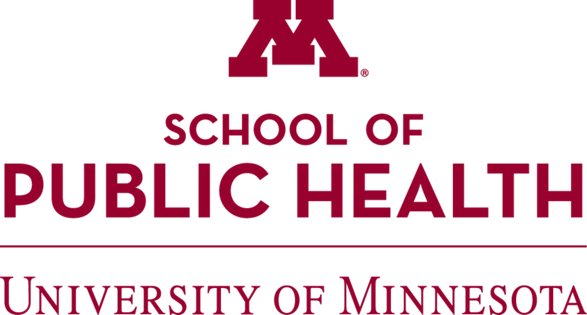The University of Minnesota School of Public Health, located in Minneapolis, Minnesota, is a professional school of the University of Minnesota. The school offers 16 masters programs and four doctoral programs, which culminate in one of the following degrees: Master of Public Health (M.P.H.), Master of Healthcare Administration (M.H.A.), Master of Science (M.S.), or Doctoral (Ph.D.). There are also many dual degree programs, such as those with the Law School, the School of Nursing, the Hubert H. Humphrey Institute of Public Affairs, and the School of Social Work.
The School of Public Health was founded in 1944, although public health courses have been offered at the University of Minnesota since its inception in 1874. The School’s faculty coordinated the pioneering Seven Countries Study directed by Professors Ancel Keys and Henry Blackburn. U.S. News & World Report consistently ranks the UMN School of Public Health among the top 10 schools of public health in the country. In 2019, the publication ranked the schools’ Healthcare Administration program as #2 in the US, up from #3 in 2015.
What Are College Acceptance Rates?
In simple terms, it is the rate at which a given school accepts applicants. It’s the percentage of students that a school admits to their incoming class, based on the total number of students that applied. This means that schools that get more students to apply will be able to reject more students. And thus have lower (and more impressive) acceptance rates. A quick example can help us clarify even more: Let’s take School X vs School Y, and say they both accepted 2,000 students for a certain incoming class. But, School X had 10,000 students apply, whereas School Y only had 4,000 applications. So, School X boasts a 20% acceptance rate while school Y’s acceptance rate is 50%, even though they accepted the same number of students into their incoming class.
Before we talk more about acceptance rates and their implications, there are some important distinctions to make. Acceptance rate, no matter how high or low, does not inherently give any information about the students’ grades or test scores. Additionally, the acceptance rate only refers to the percentage of students the school has accepted. This is different than the school’s yield rate, which refers to the percentage of accepted students who choose to attend that school. Now that we have a clearer understanding of what acceptance rates are, let’s look into why you should care about them.
Why Do Acceptance Rates Matter to Colleges & Universities?
Colleges with low acceptance rates are generally viewed as desirable by prospective students, their parents, and the academic community at large. The question remains: why?
For colleges themselves, a low acceptance rate signals to the general public that it is a highly sought-after institution. In other words, they have more applicants than they can accept, meaning (theoretically), they’re accepting only the top students.
Colleges also care about their acceptance rate because it is a factor in their ranking by third parties such as the US News College Rankings. Middle-tier colleges (those that are only moderately selective) will often game the system to get more applicants and subsequently lower their acceptance rate. For example, they might drop their application fee, so it’s free for all students to apply to the school, hopefully attracting a larger number of applications.
University Of Minnesota School Of Public Health Acceptance Rate
University Of Minnesota School Of Public Health attracts $42.6 million in NIH funding. The Master of Public Health (MPH) is the terminal, practitioner-based offering of 42 credits that seeks to address global threats. Overseen by Dr. John Finnegan Jr., the 2.5-year curriculum delivers seven concentrations: Biostatistics, Community Health Promotion, Environmental Health, Maternal & Child Health, Epidemiology, Public Health Administration & Policy, and Nutrition. Graduates must complete 180 fieldwork hours at partner facilities, such as the Mayo Clinic, Allina Health, Ecolab, UnitedHealth Group, and the FDA. Featured in Minnesota Physician, the Executive MPH helps working clinicians become Certified in Public Health part-time. Some enter the Exchange Program at Nitte University in Mangalore, India.
Home to the Center for Infection Disease Research, UMN also takes an inquiry-based approach to clinical care with the Master of Science in Public Health. Boasting a 1:1 student-faculty ratio, the three-year M.S. strengthens lab skills with thesis work in four areas: Biostatistics, Clinical Research, Environmental Health, and Health Services Policy & Administration. Specialty certificates like Food Protection, Emergency Preparedness, and Global Health could be added. Coordinated by Dr. Beth Virnig, the Doctor of Philosophy in Public Health is a four-year, post-MPH track advancing scientific expertise for academic jobs. There are currently 72 Ph.D. candidates working toward the dissertation in Biostatistics, Epidemiology, Environmental Health, and Health Services Research. Other Twin Cities programs include the Dual MPH/DDS, Master of Health Administration, and 4+1 Environmental Health MPH.
University Of Minnesota School Of Public Health has a 67 percent acceptance rate which is classified as “moderately difficult.” Class registration is only allowed after a U.S. bachelor’s degree or foreign equivalent is completed. Prerequisites vary; for instance, the MPH in Biostatistics asks for three semesters of Calculus and one Linear Algebra course. Maintaining an overall 3.0 GPA or greater at accredited institutions is compulsory. On the GRE, master’s applicants should present a composite score of 300 with at least 3.5 on the analytical writing section. The Executive MPH mandates a 3.25 average, 5+ years of industry experience, and a previous master’s or doctorate.
University of Minnesota-Twin Cities has a priority deadline of December 1st for the School of Public Health, but each program’s dates vary. The MPH considers entrants until April 1st for Biostatistics, May 1st for Maternal & Child Health, and June 1st for Nutrition. The Public Health Ph.D. has a February 1st deadline that extends to June 15th only for Environmental Health. Online SOPHAS accounts are used to submit the application wholly online. Assistance is available via sph-ask@umn.edu. SEE: Boston University School Of Public Health Acceptance Rate






